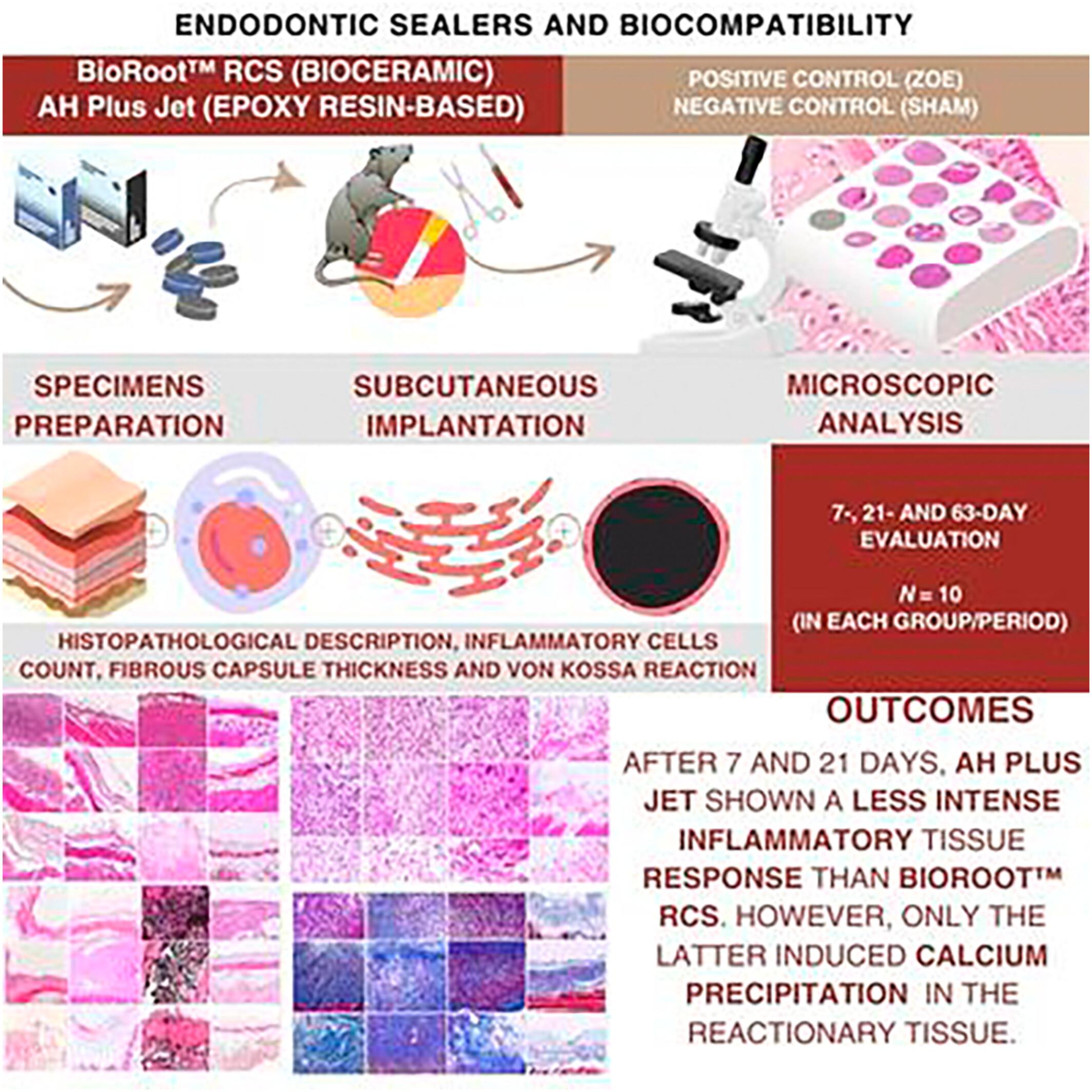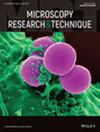Inflammatory response to bioceramic and epoxy resin-based endodontic sealers implanted in mice subcutaneous tissue: An in vivo study
Abstract
To evaluate the inflammatory tissue response to BioRoot™ RCS (BR) and AH Plus Jet (AHPJ) sealers implanted in mice subcutaneous tissue. It was hypothesized that the inflammatory tissue response to BR would be milder than to AHPJ. An in vivo study was carried out using isogenic mice. The sealers were implanted during standardized surgical procedures. The inflammatory response was evaluated by microscopic analysis and von Kossa reaction in the reactionary tissue around the specimens after 7, 21, and 63 days. For comparisons, a zinc oxide and eugenol sealer (ZOE) was used as a positive control, in addition to a negative control without a sealer (n = 10 per group/period). All statistical analyses considered a significance level of 5%. All endodontic sealers triggered an inflammatory tissue response after 7 days. BR had a higher inflammatory cell count and a thicker fibrous capsule when compared with AHPJ, but both were less inflammatory than ZOE (p < .001). After 21 days, BR continued to trigger an intense inflammatory tissue response, higher in both microscopic parameters compared to AHPJ, and a thicker fibrous capsule than ZOE (p < .001). After 63 days, the inflammatory tissue response decreased in BR, matching the fibrous capsule thickness with AHPJ and ZOE. BR promoted intense calcium precipitation in all study periods. After 63 days, AHPJ and BR sealers were more biocompatible to subcutaneous mice tissue, but AHPJ present better early inflammatory response, as well as BR showed potential bioactivity.
Research Highlights
- The inflammatory tissue response triggered by a bioceramic endodontic sealer (BR) was not milder than that triggered by an epoxy-resin based endodontic sealer (AHPJ) during the first 3 weeks, considering the microscopic analysis of the reactionary tissue.


 求助内容:
求助内容: 应助结果提醒方式:
应助结果提醒方式:


